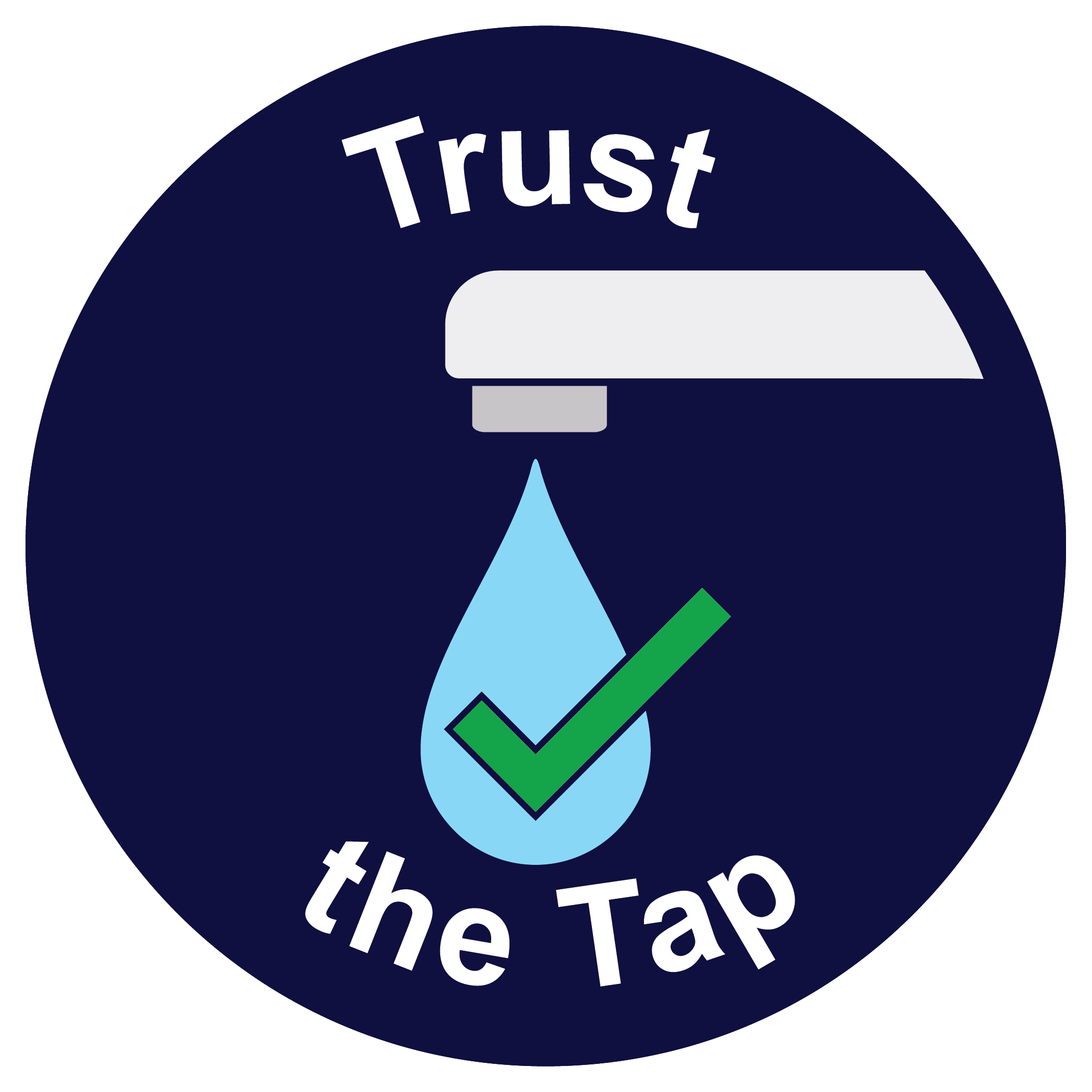Multiple barriers under one roof: protecting Kingston’s tap water
Overview
Since May 2000, the provincial government, municipalities, conservation authorities and source protection committees throughout Ontario have done tremendous work to improve the quality of municipal drinking water, by following the recommendations of the Walkerton Inquiry.
Ontario’s multi-barrier approach includes the following:
- Source water protection
- Water treatment systems
- Inspection
- Testing
- Distribution
- Drinking water
The Cataraqui Region Conservation Area (CRCA) Trust the Tap campaign highlights these successes, and we’ve created our own summary of the actions taken at Utilities Kingston to protect municipal drinking water.
What’s unique here in Kingston, are the benefits of our multi-utility model: we provide water, wastewater, natural gas, electricity and broadband networking services under one roof. We often talk about the benefits in terms of customer service and efficiencies, however the same is true in protecting our drinking water.
Background
In the year 2000, an E. coli outbreak in the Town of Walkerton’s municipal drinking water tragically resulted in the death of seven people. Twenty years after the tragedy, many of the additional 2,300 people that became sick still suffer life-altering effects of their illness.
Multiple points of failure in Walkerton’s municipal water system resulted in the devastating E. coli outbreak that has impacted thousands of people directly and influenced millions of people in other ways. The results of the Walkerton Inquiry Report and the effects of this tragic incident are still being felt throughout the water treatment industry.
A multi-factor problem required multiple solutions: the multi-barrier water management approach, as called for by Justice O’Connor in the Walkerton Inquiry Report. For Utilities Kingston, the multi-barrier approach is a multi-departmental effort in conjunction with the Ministry of Environment Conservation and Parks (MECP) and the CRCA.
Our multi-utility, multi-barrier approach
Source water protection
Lake Ontario provides an abundant source of clean, raw water to the municipality of the City of Kingston, relative to many other municipalities. Utilities Kingston does not take this for granted.
Protecting our source water involves routine water intake inspections, daily sampling and testing by certified water treatment operators and ensuring that the volume of water we draw from the lake is in line with MECP approvals.
Source water protection is often viewed as a water treatment issue, but meeting this barrier is also dependent on another utility service provided by Utilities Kingston: wastewater treatment.
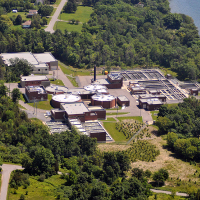 Wastewater treatment.
Wastewater treatment.
Our wastewater treatment operators collect wastewater, and through the treatment process, convert it into an effluent that is not harmful to the receiving environment. Producing high quality wastewater effluent helps protect source water for downstream users.
Other ways that wastewater collection and treatment helps to protect source water, is by reducing combined sewer overflows and through pollution prevention and control.
Did you know? We provide safe and reliable wastewater services to nearly 38,000 homes and businesses, while minimizing impact on the environment. Our employees maintain 509 kilometres of sewer main, 6,706 maintenance holes, 29 sewage pumping stations, nine combined sewer overflow tanks, and three wastewater treatment plants. (Source: Utilities Kingston Annual Report, 2019)
Water treatment
Kingston’s Point Pleasant and King Street water treatment plants are staffed 24 hours per day, 365 days per year, to ensure there is always someone ready to respond to problems.
Whether through days, nights, weekends, holidays, storms and power outages, our treatment staff keep these facilities running to the highest standard, and we are very proud of the work they do.
Treating raw water requires removing contaminants using chemically-assisted filtration and destroying/inactivating pathogens via disinfection. Through the years, Utilities Kingston has made considerable efforts to upgrade these facilities to provide the best available water treatment technology.
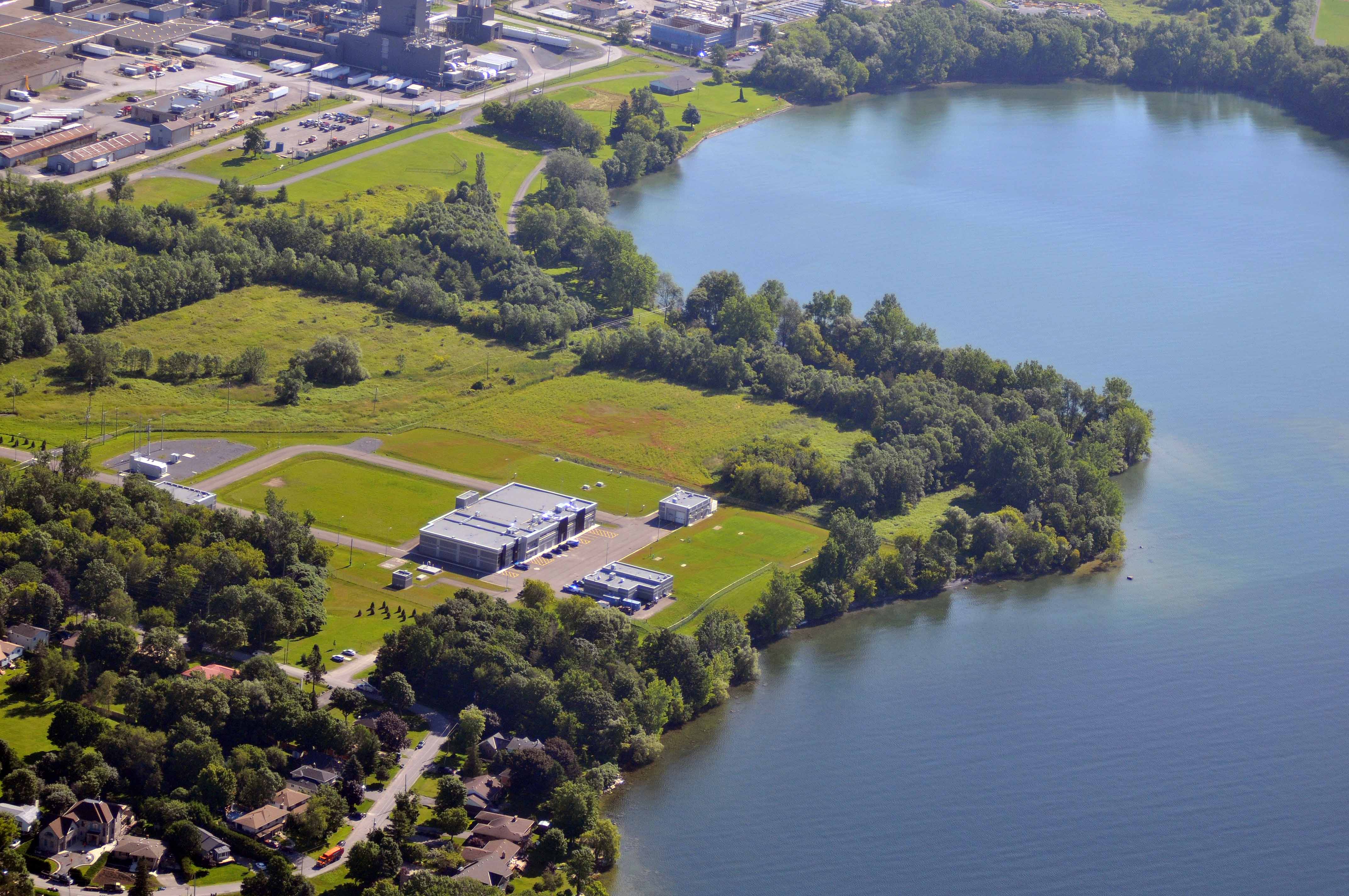 Water treatment.
Water treatment.
Utilities Kingston’s own engineering department manages these water treatment facility upgrades, ensuring the construction process is a smooth one, and the knowledge accumulated over the course of the project is retained by Utilities Kingston staff.
The tools used by the water treatment operators are state of the art and developed in house by our supervisory control and data acquisition (SCADA) team. Modern SCADA systems allow treatment operators to monitor and control the water plants from multiple buildings across the City of Kingston.
Having these computerized systems designed and managed by Utilities Kingston ensures operators are working with reliable technology to monitor the quality of drinking water. It also ensures there is always a SCADA expert available to respond when a technical issue arises with these programs.
Of course, having modern technology is not enough to ensure treatment system integrity. Water treatment operators monitor and control many different facilities throughout the City, including water reservoirs, booster stations and water towers, which would not be possible without the reliable internal fibre optic, natural gas, hydro and information services provided by our Utilities Kingston colleagues.
Did you know? We provide quality water to 39,000 homes and businesses. Our employees operate three water treatment plants, 583 kilometres of water main, 5,407 water valves, five booster stations, nine water storage facilities and 3,547 fire hydrants. 22 billion litres of treated water was pumped through our system in the past year, 0.45 billion more than the year before. (Source: Utilities Kingston Annual Report, 2019)
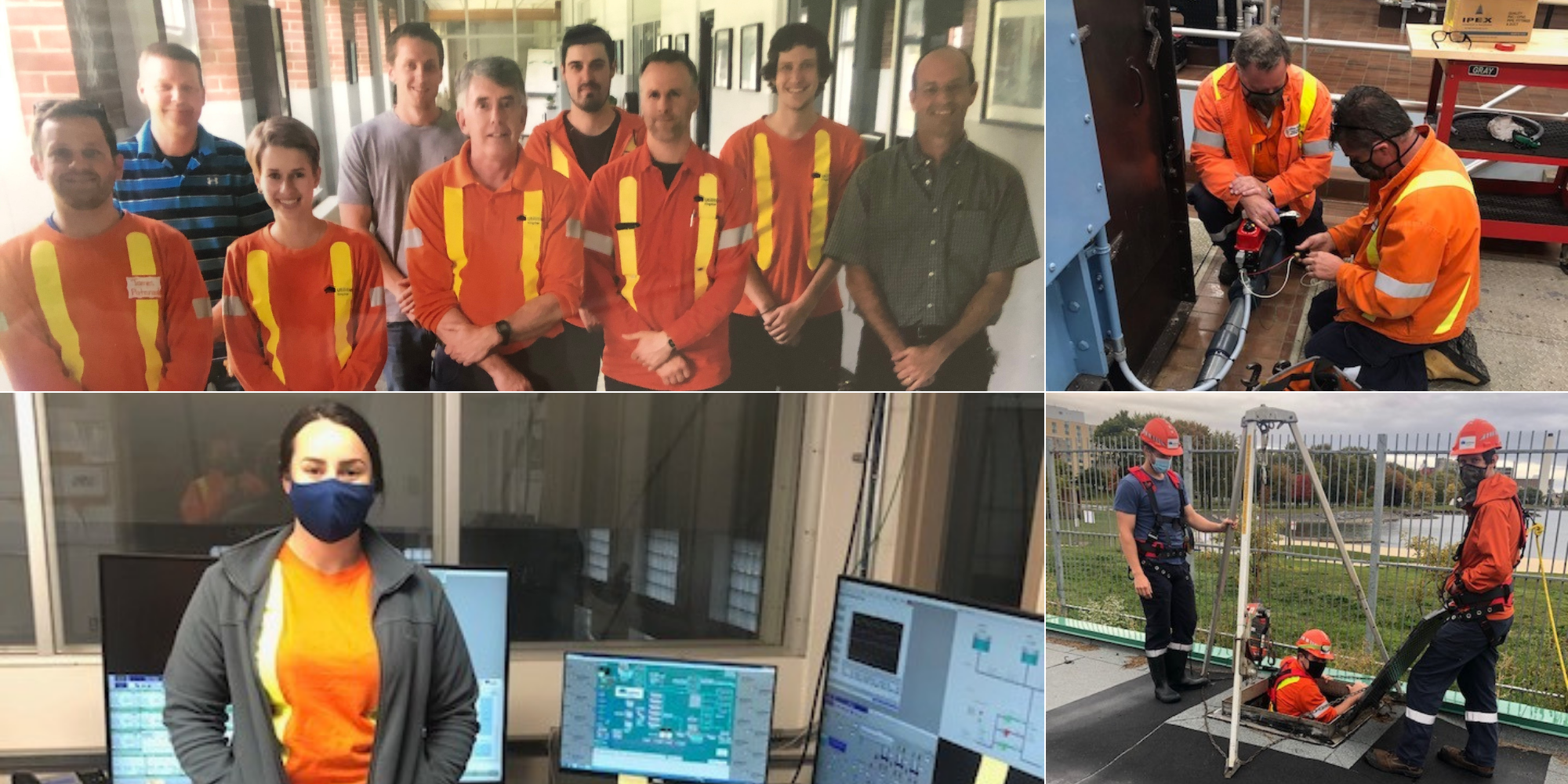
Inspections and oversight
The water treatment department welcomes MECP inspectors on-site once per year at each water treatment plant. Ensuring regulatory compliance, however, is not accomplished once per year, but must be pursued all year long. To this end, Utilities Kingston has a quality assurance operator on staff whose main priority is ensuring compliance with the Safe Drinking Water Act.
The burden of oversight of a drinking water system does not rest solely on the shoulders of MECP inspectors and quality assurance staff. Standard of Care training is a guide to help those with decision-making authority understand their responsibilities under the Safe Drinking Water Act.
Many of Utilities Kingston’s senior leadership team have participated in the training session, demonstrating their desire to play an active role in the provision of safe drinking water. Utilities Kingston’s leaders also have the duty to ensure that all their water treatment staff are competent and possess the proper certification to operate the treatment facilities.

In addition to achieving regulatory compliance, Utilities Kingston strives to conform to the Drinking Water Quality Management Standard.
Through its industry-leading quality management system (QMS), Utilities Kingston uses best management practices, industry standards and MECP recommendations to set the highest of expectations for itself as an organization.
The QMS coordinators and those who actively participate in the advancement of the QMS consistently ensure that Utilities Kingston reaches these goals and continually improves upon the highest standards.
Sampling and testing
Each year, water treatment operators perform thousands of in-house laboratory tests and collect thousands of samples that are sent to an accredited third-party laboratory for testing.
A successful drinking water testing program is another part of the multi-barrier approach that relies upon many departments to be successful.
Our water treatment operators collect a significantly higher number of samples than is required by governing regulations, but there are other internal groups that play a vital role in Utilities Kingston’s water testing program.
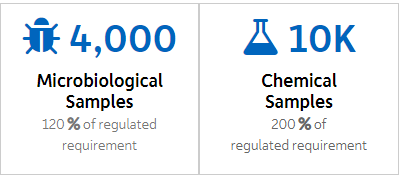
Water samples collected in 2019. (Source: Utilities Kingston Annual Report 2019)
Certified operators from various departments regularly contribute to the drinking water testing program. This includes our engineering department, ensuring that a watermain has been properly disinfected before being put in service, or our water system operators, confirming distribution system integrity after a watermain break.
Water distribution
The engineering department, water system operators and treatment group play a vital role in protecting the City of Kingston’s drinking water. However, testing is only a single component of maintaining a reliable distribution system.
Water system operators perform inspections and maintenance on several critical components throughout the distribution system, including valves and fire hydrants (see information on our proactive fire hydrant inspection and flow rating program.)
They must also ensure that the quality of water leaving the treatment plants is maintained all the way to the consumers’ tap.
To carry out inspections or maintenance activities in the distribution system, these groups rely heavily on other specialized skill sets such as geographic information systems (GIS) and locates.
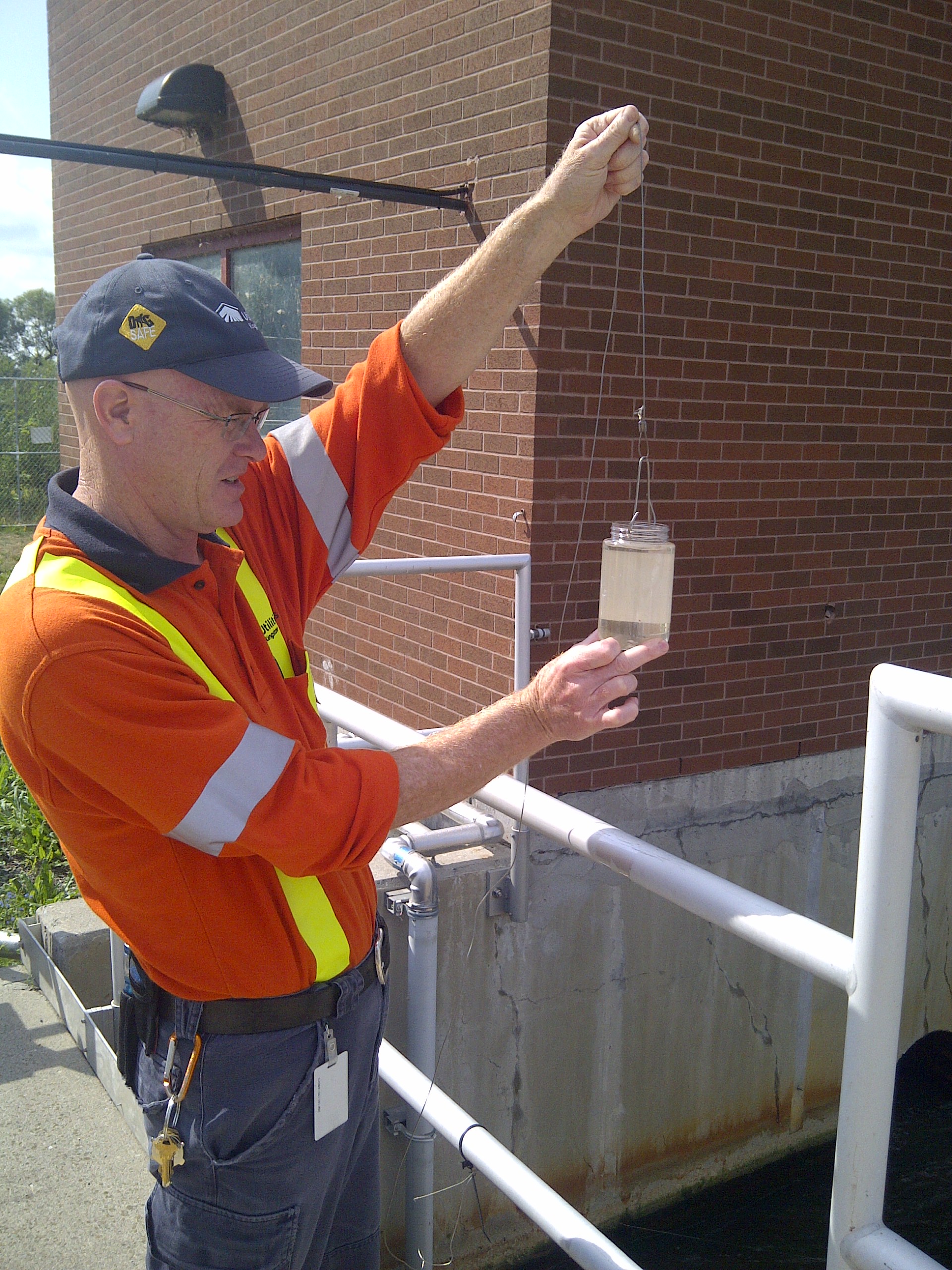 Water testing in wastewater treatment.
Water testing in wastewater treatment.
Part of keeping the distribution infrastructure in good working order is comparing the water being treated to the water being used by consumers. Because of the significant amount of chemicals and energy required to treat and distribute drinking water, water metering services and non-revenue water loss teams ensure the water treatment facilities only treat the water that is required to meet consumer demands.
The added benefits of a water loss prevention program are eliminating treated water discharges to the environment and ensuring the volume of water drawn from the lake is in line with MECP approvals.
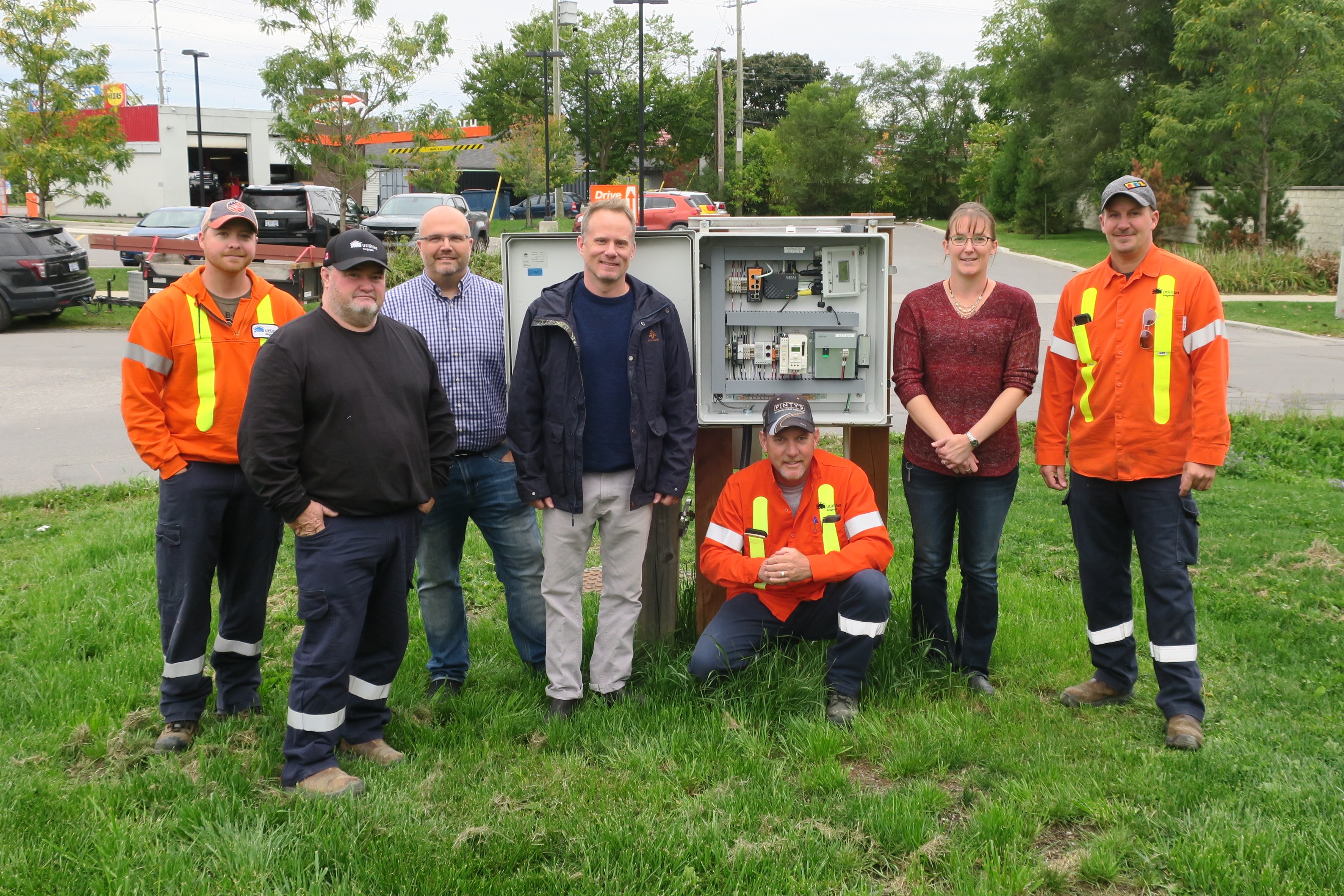
You can count on our water loss reduction team! The team: Katie Morrow, Utilities Engineer, Carl Dooher, Manager of Metering and Service, Chris Leeman, Supervisor of Water and Wastewater Systems, Joe Lewis, Manager of Water and Wastewater Systems (retired), Kevin McCauley, Director of Networking, Al Smith, QMS Coordinator, Kyle Ryan (representing SCADA and Measurement and Communications), Bernie Dowling and Dave McDermott, underground system operators.
Processes in the multi-barrier approach work together to distribute potable water to customers. The integrity of a drinking water distribution system, however, can only be protected if we proactively identify and eliminate high-risk contamination hazards.
Utilities Kingston’s cross connection control specialist is tasked with identifying potentially hazardous connections to the distribution system and preventing contamination by overseeing the installation, maintenance, and inspection of backflow prevention devices.

Potable water at the tap
After undergoing treatment, rigorous testing and pumping, what began as lake water is now considered safe to drink. The multi-barrier approach, however, still provides one further layer of protection to the consumers.
Effective communication with water consumers is an important barrier that requires support from various Utilities Kingston departments, as well as members of the public.
Utilities Kingston’s communication department uses various platforms to inform the public of emergencies such as boil water advisories or planned maintenance that may affect the supply of water to their homes. The communications department also lets the public know when annual water quality reports have been completed and made available to the public.
Our water quality assurance operators prepare these water quality reports annually and are available to answer water quality questions via email, by phone or in person.
The customer service team can often help customers immediately by answering inquiries over the phone. If the water quality issue is of an urgent nature or requires a more technical answer, the water quality assurance department is available to respond 24 hours per day, 365 days per year.
Summary
Sadly, thousands of people in the Town of Walkerton experienced the devastating consequences of a poorly executed water management program, before Justice O’Connor called for the multi-barrier approach in the Walkerton Inquiry Report. A multi-barrier approach is essential to safeguarding Kingston’s drinking water and avoiding the kind of E. coli outbreak that caused so much illness and death.
Using the multi-utility model, Utilities Kingston can provide for most of the barriers within one organization. Having a single company provide multiple utility services ensures that highly specialized departments work as a team toward common goals: protecting the environment and making certain the people of Kingston can rely on every single barrier, from source to tap.
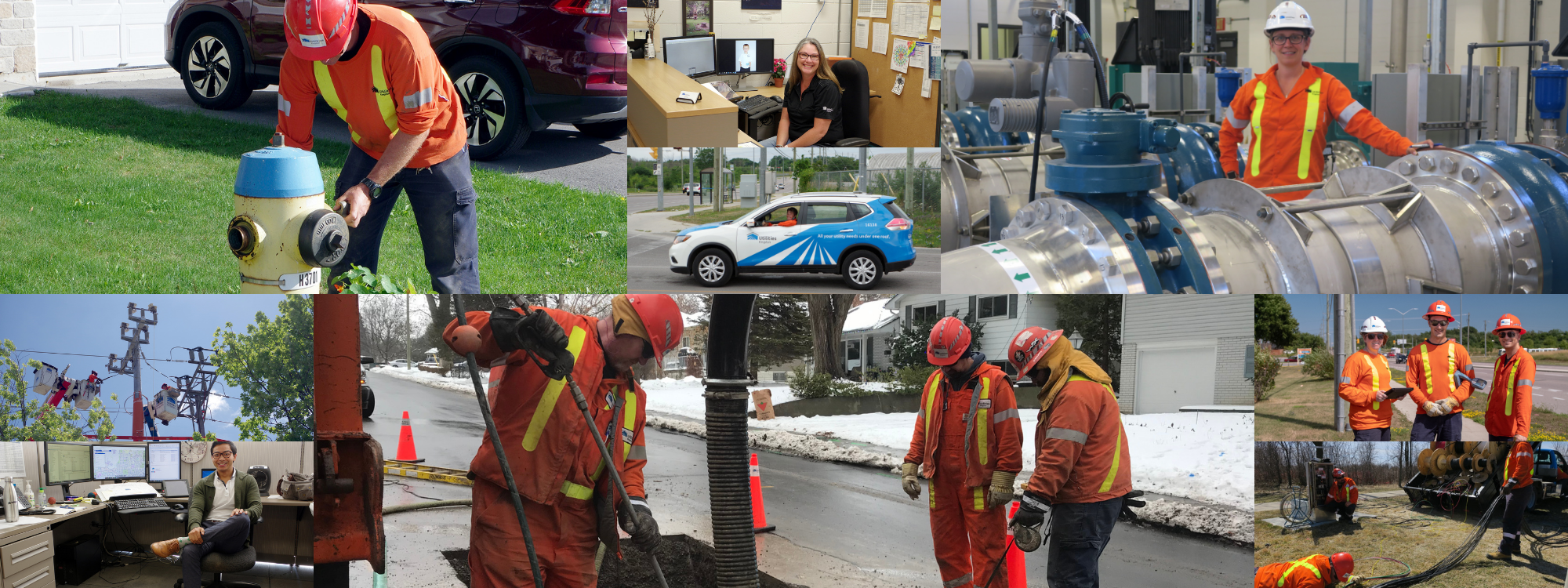
Cross-functional teams at Utilities Kingston contribute to our multi-barrier approach to protecting tap water.
Related resources
- The Cataraqui Region Conservation Area (CRCA) Trust the Tap campaign
Ontario Pipeline Article: A Multi-Utility, Multi-Barrier Approach to Protecting Tap Water
